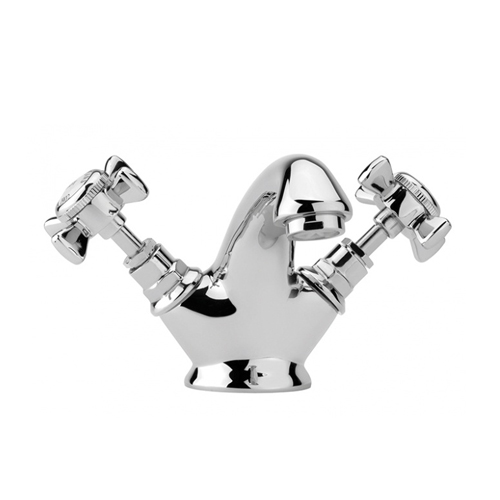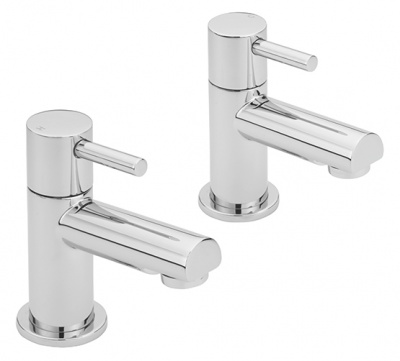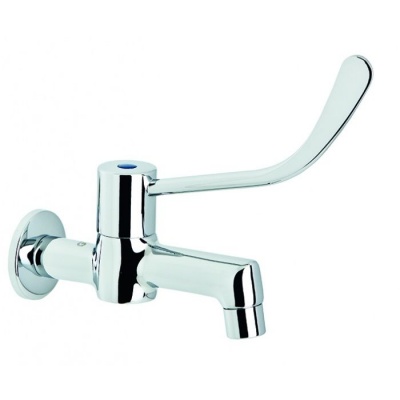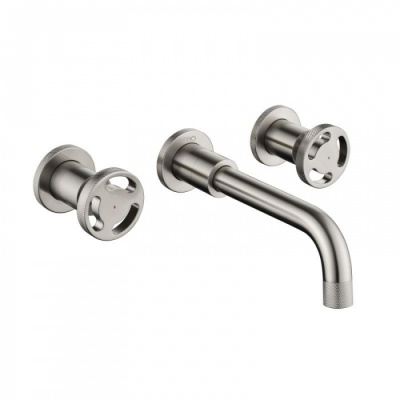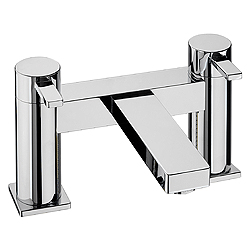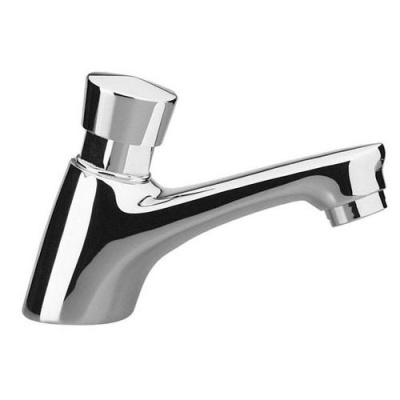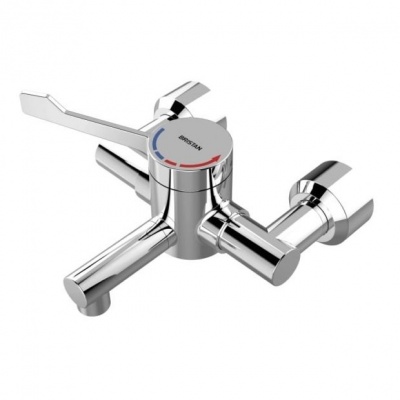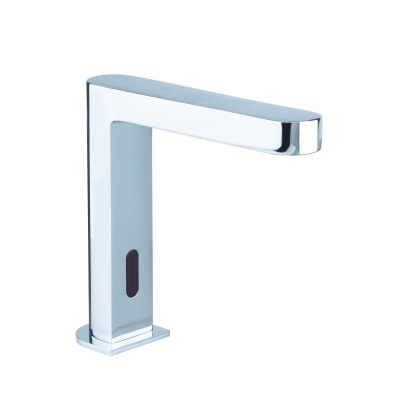Understanding Tap Types - Different Tap Types & Styles Explained
Bib Taps, Pillar Taps, Concussive Taps, Mixer Taps, Ceramic Disk Taps - what exactly is each type of tap?
Whilst we use these terms every day, we appreciate that for many people they can be a bit alien, so here's a straightforward guide to help understand the different terminology and types of taps available.
Most Common Tap Types
Mixer Taps
Mixer taps are 'all in one' taps that have both a hot and cold water supply going into the same tap and therefore mix the water before it leaves the spout. Any bathroom or kitchen tap that has both hot and cold water going into the tap is therefore a mixer tap.
Monobloc Taps
The term monobloc tap generally refers to a tap that is a single body fitted onto a single hole on basin or sink. Monobloc taps tend to usually come with flexible tap tail inlet connections and can be both single lever or two handle operated.
Pillar Taps
Pillar taps are pairs of taps with one hot and a separate cold tap with each tap operated separately. You can get pillar taps as pairs of basin, bath or kitchen taps. Pillar taps will have a rigid fixed metal tail for connecting to the water supply.
Bib Taps
Bib taps refers to kitchen taps that are wall fitted and which normally come as pairs of taps with fixed (non moving) spouts. You can think of them as pillar taps that are wall fitted.
Wall Mounted Taps
Any tap that is fitted to the wall is therefore a wall mounted tap which can be for either kitchen or bathroom. Wall mounted taps are fitted to pipework that is concealed in the wall. Wall mounted taps tend to be mixer taps and will have a fixed spout if in the bathroom but will have a swivel spout if for the kitchen.
The work for fittings concealed pipework is more involved and time consuming so does tend to be more expensive than for deck mounted taps.
Deck Mounted Taps
The term 'deck mounted' simply refers to a tap that is fitted onto a horizontal surface e.g. onto a basin, bath or kitchen sink.
Usually it refers to taps which have 2 separate water inlets or could also be taps that have adjustable legs to allow the tap to be fitted onto the existing tap holes.
Commercial Use Taps
Non Concussive Taps
Non concussive taps are timed operation taps that operate for a short period of time after a button has been depressed or a lever pushed. These are also know as 'percussion' taps and run for around 10-15 seconds and then stop. Non concussive taps are normally found in schools or commercial washrooms and are designed both to save water and also prevent flooding. Click here for examples of Non-Concussive Taps.
Sequential Taps
Sequential taps are single lever taps where the lever moves in a straight arc firstly to switch the water on and then as it progresses to increase the temperature. Sequential taps tend to be used only in healthcare and commercial settings. Click here for examples of Sequential Taps.
Sensor Taps
As the name suggests sensor taps are activated by a sensor (normally infra-red) which switches the water on when your hands are placed near the tap and switch the water off after the hands are removed. As sensor taps are touchless they are often used in commercial washrooms where minimising touch of the taps is required for hygiene purposes. Click here for examples of Sensor Taps.
Types Of Mechanism Inside The Taps
Ceramic Disk Valve Operation
Ceramic disk valve operation is where a tap has two separate controls to turn the water on or off e.g. one handle for hot and one for cold. Ceramic disk valves are normally made from brass and have an exact quarter turn movement to fully open the taps. Often these types of taps will have a lever rather than handles to operate the tap.
Washer Valve Operation
Washer valve operation is where the tap has 2 valves, each valve winds up or down and has a round rubber washer at the bottom of the valve which seals the hole where the water comes into the tap (compresses down) when the valve closes.
A compression valve can take 3-4 turns to fully open or close.
Ceramic Disk Cartridge Operation
Ceramic disk cartridges are plastic bodied cartridges operated by a single lever. The lever controls both the on/off function and also the temperature mixing. The lever will lift up to increase the flow and turn left to increase temperature and right to increase the cold water.
Sequential Cartridge Operation
A sequential cartridge operates in a straight line. As you turn the lever the water starts and as you continue in the same direction the temperature will increase. These cartridges tend to only be used in commercial/public use taps.
Timer Cartridges
Timer cartridges are sometimes called 'non concussive' cartridges and operate when they are depressed/pushed down. As the mechanism 'springs back' the water supply is then closed. These cartridges normally work for about 10-15 seconds but some will close quicker.
Low Pressure or High Pressure Taps
Low Pressure Taps
Low pressure taps will work on all water systems including homes with tanks in the loft or gravity fed water supplied (e.g. it's not pumped or through a Combi boiler). Often a low pressure tap will have larger waterways inside to help increase flow at low pressures. If you have water pressure of 0.1 to 0.2 Bar that is low pressure.
Note: If the tap is suitable for low pressure it will work even better on a high pressure system
High Pressure Taps
These can often be smaller modern designs or taps with restricted waterways and will need high pressure to produce an adequate water stream. If a tap requires high pressure e.g. 1 Bar or more, then it will be suitable for pressurised systems such as pumped water supplies, Combi boilers or mains pressure fed water systems.
Note: If a tap is recommended for high pressure systems, they will not work adequately on low pressure systems
Need More Information Understanding Different Tap Types?
If you have any questions, think we have missed any terms or would like to see any additional information shown, please get in touch as we're delighted to listen to any suggestions you feel would benefit other visitors looking for information about the taps they are looking for.




 Call Our Team:
Call Our Team: 



